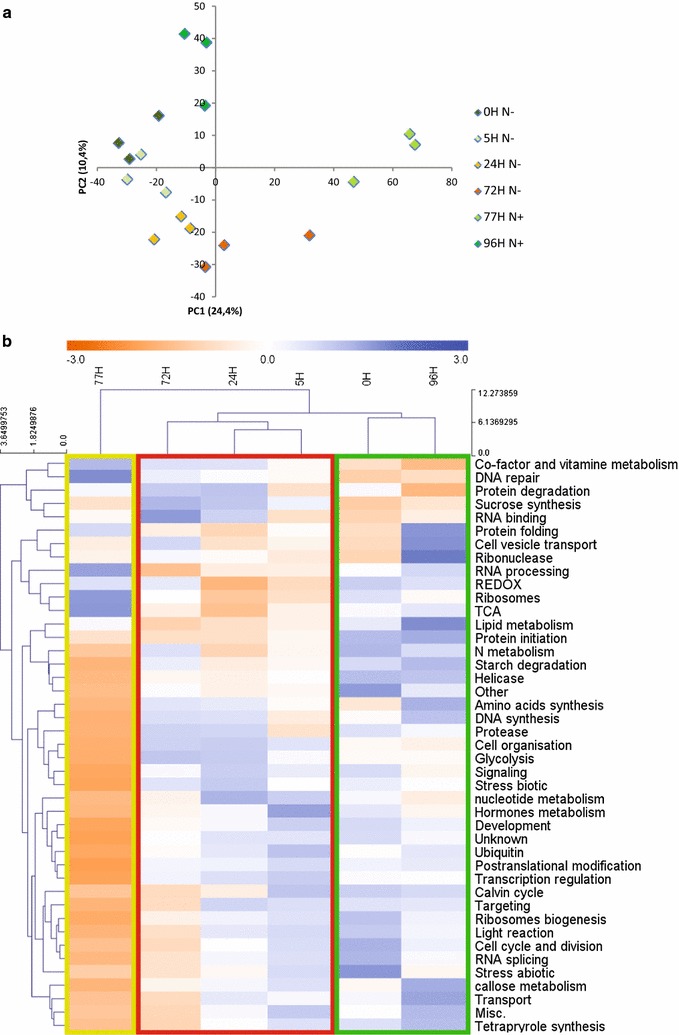Fig. 3.

Classification of the time resolved phosphoproteome datasets according to multivariate methods. a Principal component analysis (PCA) of the phosphoproteomic dataset. Detailed information about loadings as well as relative levels of phosphopeptides is provided in Additional file 2: Table S4. b Hierarchical Clustering and heatmap analysis of functional protein categories according to MapMan. Three different clusters can be distinguished, showing the different degrees of response to N availability. Cluster 1 (green) comprising the recovered samples (0 and 96 h), Cluster 2 (red) comprising the N-depleted samples (5, 24, 72 h), and Cluster 3 (yellow-green) representing early recovered samples after N replenishment (77 h). Aggregation of the 96-h and 0-h time points is a result of cell recovery from N depletion by N replenishment. The bi-clustering uses average linkage of Euclidean distance between groups as the metric (Additional file 2: Table S5). (Control: 0 h; N depletion: 5, 24, and 72 h; N recovery: 77 and 96 h)
